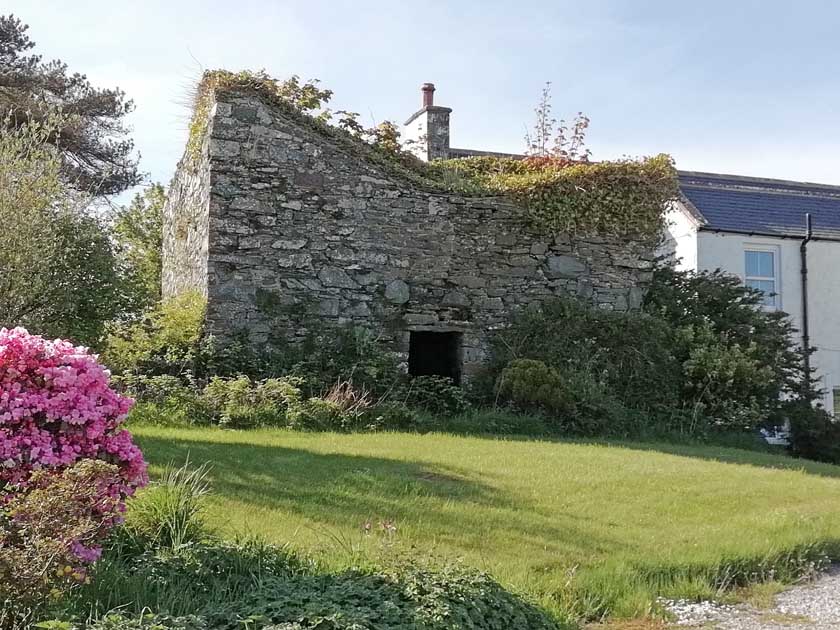Balmangan Tower

Balmangan Tower Details
Balmangan Tower, ruins of C16 tower house of the MacLellans in private garden
- Closest To: Millhall, Kirkcudbright
- Access: S.O.A.C. Public Access
- Grid Reference: NX650457
Balmangan Tower is a ruined tower house dating to the late 15th or more likely the mid 16th century that was erected for the MacLellan family on level ground overlooking Kirkcudbright Bay. The ruin is clearly visible from the public roads, but is in a private garden and not open to the public.
The lands of Balmangan, previously known as the Grange of Senwick, were granted to Hugh de Morville, the Constable of Scotland, by King David I in the mid 12th century, and subsequently passed by marriage to the Lords of Galloway, Roger de Quincy, and were then split between three heiresses. After the Wars of Independence, the lands of Senwick were granted to the Countess of Atholl, but they later reverted to the crown, with various tenants, into the reign of King James IV, when the “lands of Balmangane” were granted to William Brown. The other half was held by the Macer, David Purves in 1517, and was retained by his son, who seems to have relinquished the lease, and by the 1580s it was being held by William MacLellan.
By this time the tower had been built, and what remains gives a clear idea of the nature of the building. The ground floor was vaulted, and accessed by a doorway in the eastern wall, which has since been blocked up. This doorway opened into a mural chamber, with a winding stair leading to the first floor built partly in the thickness of the wall in the northern corner, and part projecting into the living space. The basement was lit by three narrow slit windows. The first floor hall had a fireplace midway down the western wall, and probably had two windows, although the fallen wall has partly removed evidence of them. Off the hall was a small mural chamber in the western corner containing a garderobe. Although the early photograph shows the ruin as ivy covered, it is possible to conjecture that the second floor extended into the attic, and that the tower was somewhat lower than many of its type. William MacLellan died in 1605, and his heir Thomas succeeded him, followed by Thomas’ son James and grandson Robert. By 1661 Robert was in financial difficulty, and although his son inherited the property, it was heavily mortgaged, and by about 1700 it had been repossessed by the Carson family, who themselves lost the property due to debts in the mid 18th century. The tower appears to have fallen into ruin in the first quarter of the 19th century, appearing ruinous on maps of 1821.
Become a supporter of my work to access a more detailed history